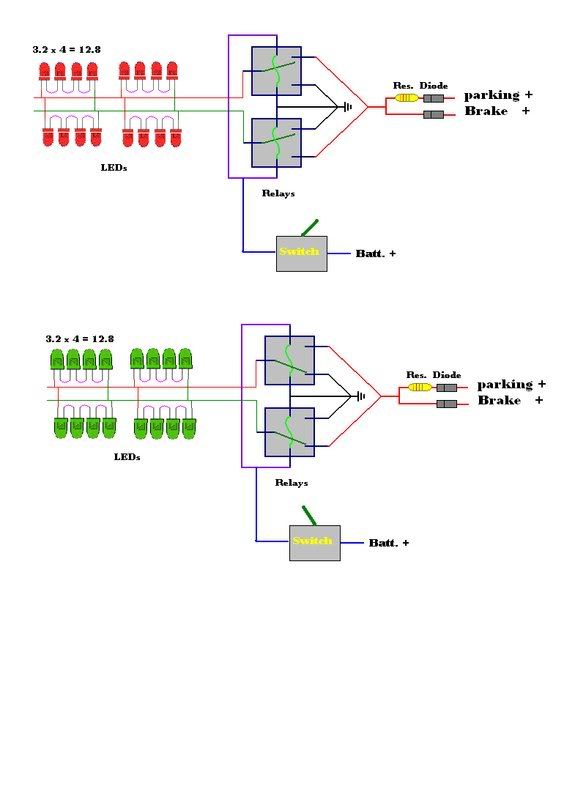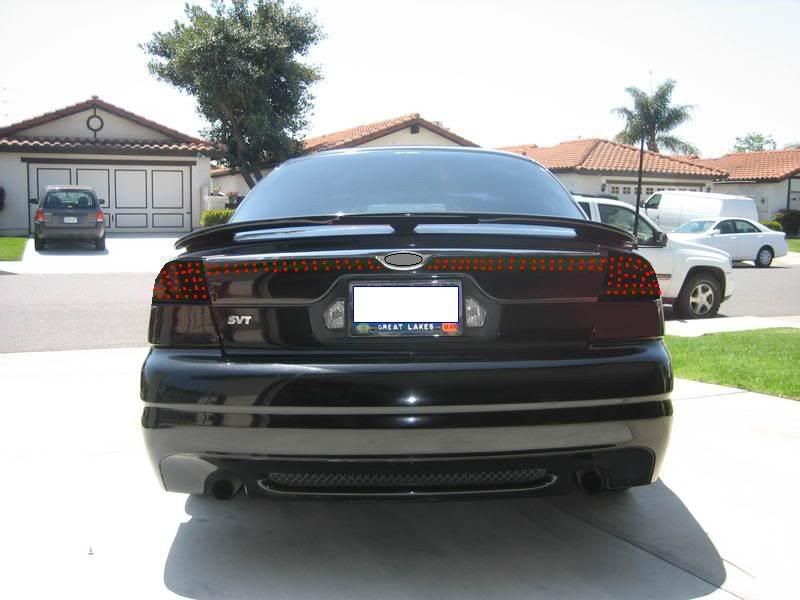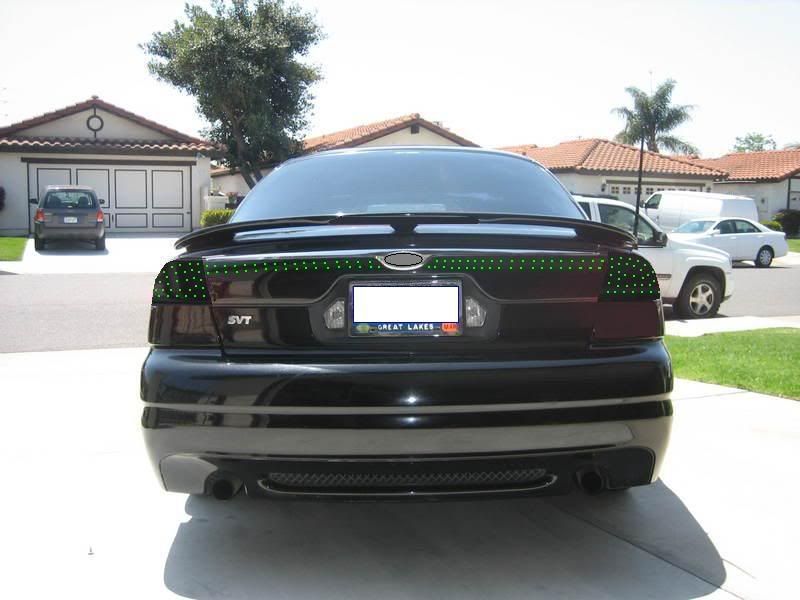WiredMotorSports
CEG'er
Im now thinking of wiring a set of LED tail lights. This will be all home gown so i need to find info.
Im Going with 3.4-3.6V Bi-Colored 3 prong LEDs. Green/Red
I know and have the Diodes to block back flow when i bring parking and brake together. I also know what resistor im going to use to drop power down on the parking wire to cause it to be dimmer.... but Im at a lost for the actual set up... this is what i have so far.
If it was a single color i could....
parking+--[diode]--{resistor}--v
Brake+--[Diode]---------------^--(+LED-)---(+LED-)--(+LED-)--(+LED-)-#
With the strand of 4 LEDs (4*3.2) to 12.8 so no Resistors are needed...
But with the 3 lead LEDs i cant chain them together cause what ill need to have will look like this ....
. mmmmmmmmmmmmmmmmmmmGround
Parking--[diode]--{resistor}-vmmm^ -----Red +-----:L D:
Brake----[Diode]------------^-- RELAY ---- Grn +---: E :--- Ground
. mmmmmmmmmmmmmmmmmmmmmv
. mmmmmmmmmmmmmmmmmmmmSwitch
To explain it the parking and brake come together as the imput for the Relay. the relay is switched to put out to the red lead for red brake lights and when the relay is switched it will change the output to Grn Brake lights.
So by having the need change them i cant daisy chain them. All i can think of is just running 3 wires the whole way down.. one R+,R+,R+,R+,R+,R+... and G+,G+,G+,G+,G+,G+... and the ground the same way -,-,-,-,-,-...
but this wont give me resistance like a chain would So any ideas on what resistor i should use?
From what ive found from other ppls math is showing about 320ohms res.
And im still not sure if i should put one on each + lead or maybe just just before the Relay so that res. effects it all or can i put a single res. at the end before the ground???
MAKE ANY SENSE?
if you know electronics it should. Help me out some. lol
Ill post pix when i get started
Im Going with 3.4-3.6V Bi-Colored 3 prong LEDs. Green/Red
I know and have the Diodes to block back flow when i bring parking and brake together. I also know what resistor im going to use to drop power down on the parking wire to cause it to be dimmer.... but Im at a lost for the actual set up... this is what i have so far.
If it was a single color i could....
parking+--[diode]--{resistor}--v
Brake+--[Diode]---------------^--(+LED-)---(+LED-)--(+LED-)--(+LED-)-#
With the strand of 4 LEDs (4*3.2) to 12.8 so no Resistors are needed...
But with the 3 lead LEDs i cant chain them together cause what ill need to have will look like this ....
. mmmmmmmmmmmmmmmmmmmGround
Parking--[diode]--{resistor}-vmmm^ -----Red +-----:L D:
Brake----[Diode]------------^-- RELAY ---- Grn +---: E :--- Ground
. mmmmmmmmmmmmmmmmmmmmmv
. mmmmmmmmmmmmmmmmmmmmSwitch
To explain it the parking and brake come together as the imput for the Relay. the relay is switched to put out to the red lead for red brake lights and when the relay is switched it will change the output to Grn Brake lights.
So by having the need change them i cant daisy chain them. All i can think of is just running 3 wires the whole way down.. one R+,R+,R+,R+,R+,R+... and G+,G+,G+,G+,G+,G+... and the ground the same way -,-,-,-,-,-...
but this wont give me resistance like a chain would So any ideas on what resistor i should use?
From what ive found from other ppls math is showing about 320ohms res.
And im still not sure if i should put one on each + lead or maybe just just before the Relay so that res. effects it all or can i put a single res. at the end before the ground???
MAKE ANY SENSE?
if you know electronics it should. Help me out some. lol
Ill post pix when i get started



